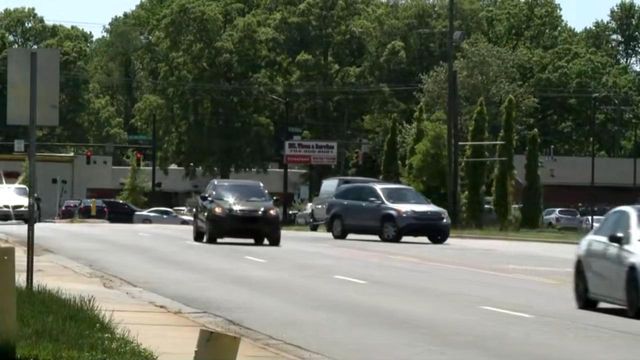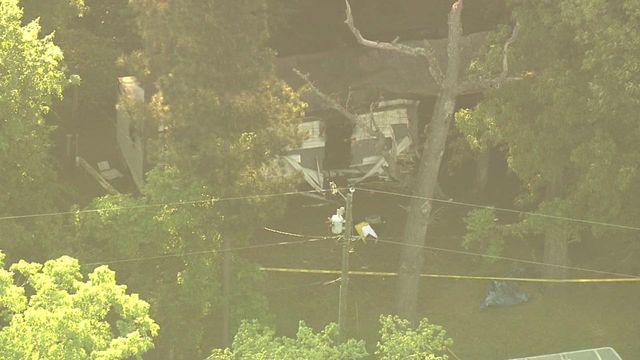New EPA rule says 218 US chemical plants must reduce toxic emissions that are likely to cause cancer
WASHINGTON (AP) — More than 200 chemical plants nationwide will be required to reduce toxic emissions that are likely to cause cancer under a new rule issued Tuesday by the Environmental Protection Agency. The rule advances President Joe Biden’s commitment to environmental justice by delivering critical health protections for communities burdened by industrial pollution from ethylene oxide, chloroprene and other dangerous chemicals, officials said.
Areas that will benefit from the new rule include majority-Black neighborhoods outside New Orleans that EPA Administrator Michael Regan visited as part of his 2021 Journey to Justice tour. The rule will significantly reduce emissions of chloroprene and other harmful pollutants at the Denka Performance Elastomer facility in LaPlace, Louisiana, the largest source of chloroprene emissions in the country, Regan said.
“Every community in this country deserves to breathe clean air. That’s why I took the Journey to Justice tour to communities like St. John the Baptist Parish, where residents have borne the brunt of toxic air for far too long,” Regan said. “We promised to listen to folks that are suffering from pollution and act to protect them. Today we deliver on that promise with strong final standards to slash pollution, reduce cancer risk and ensure cleaner air for nearby communities.”
When combined with a rule issued last month cracking down on ethylene oxide emissions from commercial sterilizers used to clean medical equipment, the new rule will reduce ethylene oxide and chloroprene emissions by nearly 80%, officials said.
The rule will apply to 218 facilities spread across the United States — more than half in Texas or Louisiana. Plants also are located in two dozen other states, including Ohio and other Midwest states, West Virginia, Pennsylvania, New York and throughout the South, the EPA said. The action updates several regulations on chemical plant emissions that have not been tightened in nearly two decades.
In North Carolina, there are three chemical plants required to reduce toxic emissions:
- Georgia Pacific Chemicals in Conway
- Hexion Inc. in Fayetteville
- Oak-Bark Corp. / Hexion Inc. - Acme Operations / Wright Corp / Silar LLC in Riegelwood

Shawn Taylor, a public information officer for the North Carolina Department of Environmental Quality's Division of Air Quality, said more facilities could also face regulations.
"The N.C. Division of Air Quality is still reviewing the final rule from EPA and determining which facilities in the state will be subject to the new standards," Taylor wrote in a statement provided to WRAL News. "While this review is not yet complete, a preliminary assessment identified several organic liquids distribution facilities that are potentially subject to the standards, including facilities not on EPA’s list.
"Our preliminary assessment has not found any ethylene oxide production facilities or petroleum refineries in the state that are potentially subject
Taylor said the Department of Environmental Quality's assessment is ongoing.
"“There are a number of highly toxic chemicals that are used in industry," said University of Iowa environmental health professor Peter Thorne. "And, the ones in play here are used for manufacture of plastics or rubber products, neoprene, or for sterilizing medical devices and instruments.
"And they're also used as precursor chemicals for producing other things. And because they're highly reactive, they're also highly toxic, because the reactive in the body.”
Thorne also serves as a member of the EPA's Science Advisory Board.
“When one inhales these chemicals, they interact with DNA and they cause mutagen mutation of the DNA that leads to cancer," Thorne said. "They're in a class of compounds we call human carcinogens.
"That's been established through human epidemiologic studies, mostly of workers, but also of people who have other exposures."
Democratic Rep. Troy Carter, whose Louisiana district includes the Denka plant, called the new rule “a monumental step" to safeguard public health and the environment.
“Communities deserve to be safe. I've said this all along,'' Carter told reporters at a briefing Monday. "It must begin with proper regulation. It must begin with listening to the people who are impacted in the neighborhoods, who undoubtedly have suffered the cost of being in close proximity of chemical plants — but not just chemical plants, chemical plants that don’t follow the rules.''
Carter said it was "critically important that measures like this are demonstrated to keep the confidence of the American people.''
Thorne also discussed the types of communities most impacted by the ruling.
“One element of the rule that's passed is going to be reporting," Thorne said. "And, I think that's an important element, because many of the communities that are exposed are of communities of color, people of low socioeconomic status.
"And, and they have been asking for this type of a rule for a long time."
The American Chemistry Council, which represents chemical manufacturers, said it was reviewing the rule but criticized EPA's use of what it called "a deeply flawed'' method to determine the toxicity of ethylene oxide.
“We also remain concerned with the recent onslaught of chemical regulations being put forth by this administration,'' the group said in a statement. Without a different approach, “the availability of critical chemistries will dwindle'' in the U.S., harming the country's supply chain, the ACC said.
The new rule will slash more than 6,200 tons (5,624 metric tonnes) of toxic air pollutants annually and implement fenceline monitoring, the EPA said, addressing health risks in surrounding communities and promoting environmental justice in Louisiana and other states.
The Justice Department sued Denka last year, saying it had been releasing unsafe concentrations of chloroprene near homes and schools. Federal regulators had determined in 2016 that chloroprene emissions from the Denka plant were contributing to the highest cancer risk of any place in the United States.
Denka, a Japanese company that bought the former DuPont rubber-making plant in 2015, said it “vehemently opposes” the EPA’s latest action.
“EPA’s rulemaking is yet another attempt to drive a policy agenda that is unsupported by the law or the science,” Denka said in a statement, adding that the agency has alleged its facility “represents a danger to its community, despite the facility’s compliance with its federal and state air permitting requirements.”
The Denka plant, which makes synthetic rubber, has been at the center of protests over pollution in majority-Black communities and EPA efforts to curb chloroprene emissions, particularly in the Mississippi River Chemical Corridor, an 85-mile (137-kilometer) industrial region known informally as Cancer Alley. Denka said it already has invested more than $35 million to reduce chloroprene emissions.
The EPA, under pressure from local activists, agreed to open a civil rights investigation of the plant to determine if state officials were putting Black residents at increased cancer risk. The agency initially found evidence of discrimination, but in June it dropped its investigation without releasing any official findings and without any commitments from the state to change its practices.
Regan said the rule issued Tuesday was separate from the civil rights investigation. He called the rule “very ambitious,'' adding that officials took care to ensure “that we protect all of these communities, not just those in Cancer Alley, but communities in Texas and Puerto Rico and other areas that are threatened by these hazardous air toxic pollutants.''
While it focuses on toxic emissions, “by its very nature, this rule is providing protection to environmental justice communities — Black and brown communities, low-income communities — that have suffered for far too long,'' Regan said.
Patrice Simms, vice president of the environmental law firm Earthjustice, called the rule “a victory in our pursuit for environmental justice.”
Fenceline monitoring for six toxic air pollutants — ethylene oxide, chloroprene, vinyl chloride, benzene, 1,3-butadiene and ethylene dichloride — will be crucial to ensure accountability and transparency, Simms and other advocates said. The new rule marks just the second time that EPA has mandated fenceline monitoring in air toxics standards under the Clean Air Act.
“For years, we’ve watched our families and neighbors suffer from disease, like cancer, due to underregulated emissions,” said Robert Taylor, founder of Concerned Citizens of St. John, a local advocacy group.
After the EPA closed its civil rights complaint, “we felt little hope that any government could protect us from industry,'' Taylor said. The new rule is “renewing our hope,'' he said.
___
Associated Press writer Michael Phillis in St. Louis contributed to this story.









